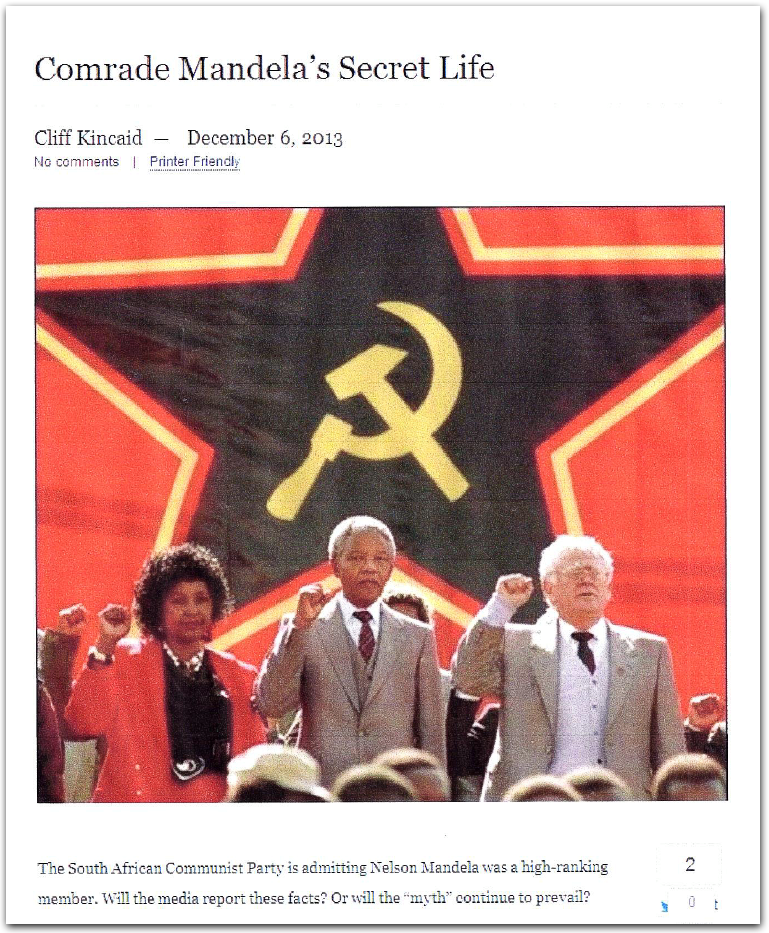- HOME
- MEDIA
- L.Onerva
- Eino Leino
- Eeva-Liisa Manner
- Erään Opon päiväkirja
- Elämänkenttäni
- Elämäni ”viiva”
- Käyttöteoriani – se miten minä ohjaan
- Kulttuuritietoinen ja kansainvälistyvä ohjaus
- Ohjauksen järjestäminen maahanmuuttajakoulutuksessa
- Ohjauksen yhteiskunnallinen viitekehys
- Ohjaukäsite
- Oma opiskeluorientaatio
- Opiskelijoiden yksilöllisyys ohjauksessa
- EETTISET KYSYMYKSET
- Psykososiaalisen kehityksen teoria
- Suhteeni erilaisuuteen ja tehtäväni opinto-ohjaajana
- Opinto-ohjauksen ja erityisopetuksen yhtäläisyyksiä ja eroja
- Kehitykseni opinto-ohjaajana
- Maahanmuuttajan uraohjaus
- Maahanmuuttajien ohjaus ja neuvonta: kuka, mitä, miten?
- Ohjauksen tulevaisuus
- Elämänkenttäni
- Mariana Marin
- Claudiu Komartin
- Mariana Codrut
- Roland Erb
- Romanian poetry
- STORIES
- READING POETRY
- translated Finnish-Romanian
- translated English-Finnish
- translated French-Finnish
- translated Romanian-English
- translated Spanish-English
- translated German-English
- translated Finnish-English
- translated English-Romanian
- translated French-Romanian
- translated French-English
- translated Romanian-French
- translated Romanian-German
essays
Rolling in money, ruining lives – the truth about so-called Mother Teresa
POSTED IN essays December 23, 2013
Rolling in money, ruining lives – the truth about so-called Mother Teresa.
11/04/2013
Mother Teresa’s House of Illusions
How She Harmed Her Helpers As Well As Those They ‘Helped’
by Susan ShieldsThe following article is from Free Inquiry magazine, Volume 18, Number 1
“Some years after I became a Catholic, I joined Mother Teresa’s
congregation, the Missionaries of Charity. I was one of her sisters for
nine and a half years, living in the Bronx, Rome, and San Francisco,
until I became disillusioned and left in May 1989. As I re-entered the
world, I slowly began to unravel the tangle of lies in which I had
lived. I wondered how I could have believed them for so long.Three of Mother Teresa’s teachings that are fundamental to her
religious congregation are all the more dangerous because they are
believed so sincerely by her sisters. Most basic is the belief that as
long as a sister obeys she is doing God’s will. Another is the belief
that the sisters have leverage over God by choosing to suffer. Their
suffering makes God very happy. He then dispenses more graces to
humanity. The third is the belief that any attachment to human beings,
even the poor being served, supposedly interferes with the love of God and
must be vigilantly avoided or immediately uprooted.The efforts to prevent any attachments cause continual chaos and confusion,
movement and change in the congregation. Mother Teresa did not invent these
beliefs – they were prevalent in religious congregations before Vatican
II – but she did everything in her power (which was great) to enforce
them.Once a sister has accepted these fallacies she will do almost
anything. She can allow her health to be destroyed, neglect those she
vowed to serve, and switch off her feelings and independent thought.
She can turn a blind eye to suffering, inform on her fellow sisters,
tell lies with ease, and ignore public laws and regulations.Women from many nations joined Mother Teresa in the expectation that
they would help the poor and come closer to God themselves. When I
left, there were more than 3,000 sisters in approximately 400 houses
scattered throughout the world. Many of these sisters who trusted
Mother Teresa to guide them have become broken people.In the face of overwhelming evidence, some of them have finally admitted that their
trust has been betrayed, that God could not possibly be giving the
orders they hear. It is difficult for them to decide to leave – their
self-confidence has been destroyed, and they have no education beyond
what they brought with them when they joined. I was one of the lucky
ones who mustered enough courage to walk away.It is in the hope that others may see the fallacy of this purported
way to holiness that I tell a little of what I know. Although there are
relatively few tempted to join Mother Teresa’s congregation of sisters,
there are many who generously have supported her work because they do
not realize how her twisted premises strangle efforts to alleviate
misery. Unaware that most of the donations sit unused in her bank
accounts, they too are deceived into thinking they are helping the poor.As a Missionary of Charity, I was assigned to record donations and
write the thank-you letters. The money arrived at a frantic rate. The
mail carrier often delivered the letters in sacks. We wrote receipts
for checks of $50,000 and more on a regular basis. Sometimes a donor
would call up and ask if we had received his check, expecting us to
remember it readily because it was so large. How could we say that we
could not recall it because we had received so many that were even
larger?When Mother spoke publicly, she never asked for money, but she did
encourage people to make sacrifices for the poor, to “give until it
hurts.” Many people did – and they gave it to her. We received touching
letters from people, sometimes apparently poor themselves, who were
making sacrifices to send us a little money for the starving people in
Africa, the flood victims in Bangladesh, or the poor children in India.
Most of the money sat in our bank accounts.The flood of donations was considered to be a sign of God’s approval
of Mother Teresa’s congregation. We were told by our superiors that we
received more gifts than other religious congregations because God was
pleased with Mother, and because the Missionaries of Charity were the
sisters who were faithful to the true spirit of religious life.Most of the sisters had no idea how much money the congregation was
amassing. After all, we were taught not to collect anything. One summer
the sisters living on the outskirts of Rome were given more crates of
tomatoes than they could distribute. None of their neighbors wanted
them because the crop had been so prolific that year. The sisters
decided to can the tomatoes rather than let them spoil, but when Mother
found out what they had done she was very displeased. Storing things
showed lack of trust in Divine Providence.The donations rolled in and were deposited in the bank, but they had
no effect on our ascetic lives and very little effect on the lives of
the poor we were trying to help. We lived a simple life, bare of all
superfluities. We had three sets of clothes, which we mended until the
material was too rotten to patch anymore. We washed our own clothes by
hand. The never-ending piles of sheets and towels from our night
shelter for the homeless we washed by hand, too. Our bathing was
accomplished with only one bucket of water. Dental and medical checkups
were seen as an unnecessary luxury.Mother was very concerned that we preserve our spirit of poverty.
Spending money would destroy that poverty. She seemed obsessed with
using only the simplest of means for our work. Was this in the best
interests of the people we were trying to help, or were we in fact
using them as a tool to advance our own “sanctity?” In Haiti, to keep
the spirit of poverty, the sisters reused needles until they became
blunt. Seeing the pain caused by the blunt needles, some of the
volunteers offered to procure more needles, but the sisters refused.We begged for food and supplies from local merchants as though we
had no resources. On one of the rare occasions when we ran out of
donated bread, we went begging at the local store. When our request was
turned down, our superior decreed that the soup kitchen could do
without bread for the day.It was not only merchants who were offered a chance to be generous.
Airlines were requested to fly sisters and air cargo free of charge.
Hospitals and doctors were expected to absorb the costs of medical
treatment for the sisters or to draw on funds designated for the
religious. Workmen were encouraged to labor without payment or at
reduced rates. We relied heavily on volunteers who worked long hours in
our soup kitchens, shelters, and day camps.A hard-working farmer devoted many of his waking hours to collecting
and delivering food for our soup kitchens and shelters. “If I didn’t
come, what would you eat?” he asked.
Our Constitution forbade us to beg for more than we needed, but,
when it came to begging, the millions of dollars accumulating in the
bank were treated as if they did not exist.For years I had to write thousands of letters to donors, telling
them that their entire gift would be used to bring God’s loving
compassion to the poorest of the poor. I was able to keep my
complaining conscience in check because we had been taught that the
Holy Spirit was guiding Mother. To doubt her was a sign that we were
lacking in trust and, even worse, guilty of the sin of pride. I shelved
my objections and hoped that one day I would understand why Mother
wanted to gather so much money, when she herself had taught us that
even storing tomato sauce showed lack of trust in Divine Providence.”For nearly a decade, Susan Shields was a Missionaries of Charity
sister. She played a key role in Mother Teresa’s organization until she
resigned.Pat Franklin adds: The money which poured in is money which could have gone to some of the really great charities which actually do help so many in India and round the world – and which give poor people the gospel as well! She did not, and as her own death drew near, she reportedly did not know if she was going to heaven or not. ‘Mother’ Teresa – I’m glad she wasn’t MY mother!
by Susan Shields
The Real Mandela – The American Vision
POSTED IN essays December 22, 2013
The Real Mandela – The American vision
“There is nothing sacred or inherently superior about non-violent methods of struggle.”
Nelson Mandela
With the media gushing about the greatness of Nelson Mandela now on the day after his death, a counterpoint with the rest of the story is badly needed. Below are a few video interviews of South African missionary Peter Hammond, who tells the real truth about Mandela.
Portrayed as a liberator by the media, Mandela was a Marxist and convicted terrorist. Hammond relates of Mandela:
He admitted in open court—pleaded “guilty”—and remember, he was trained as a lawyer—he pleaded “guilty” to 156 acts of public violence and terrorism. He was the head of the revolutionary terrorist wing of the ANC [African National Congress] “Umkhonto we Sizwe.” And he was behind so many different operations: from the plotting of bombs in the railway station (which killed women and children, which crippled people), bombs in shopping centers, attacks on farmers, . . . so many acts of violence.
He goes on to say that modern portrayals make Mandela out to be a saint, but never mention why he was in prison to begin with. It was for good and just reason. “Not even the Amnesty International would take his case, because they said he wasn’t a political prisoner. He had had a fair trial and a reasonable sentence. He had his day in court. He was not a political prisoner. He was in jail for acts of violence.”
He relates that the crimes for which Mandela was given life imprisonment in South Africa, he would have received the death penalty in the U.S. or Britain at the time. It was the political climate that later got him released, and leftist revisionism that has whitewashed his early life of violence. If anything, Mandela’s legacy is an argument in favor of the death penalty. When such criminals are not disposed of, there is always a chance future political powers may be corrupt enough to release them—perhaps even into positions of power.
In light of the truth about Mandela, Hammond can say, “I’m astounded that so many in the west idolize Nelson Mandela and lift him up as a messianic figure, because they obviously don’t know what he teaches, what he believes, or what he does, or his support for some of the most radical Marxist dictatorships on the planet.”
This includes many Christians: “A lot of Christians out there idolize Nelson Mandela just because they’ve only been given false, misleading, and incomplete information.”
When Mandela fell ill a year ago, the media began to prepare for the very hagiography which it is now publishing about the fallen terrorist. Barack Obama seized the opportunity to tour South Africa, speaking on human rights everywhere he went, invoking the name of Mandela at every stop and praising his work.
A liberal NPR commentator could not contain himself this morning. He lamented the fact that during Obama’s visit to the country, Mandela was too ill for a photo-op: “The first black president of the United States standing beside the first black president of South Africa would’ve made for a powerful moment.”
Or he might have said: “One crypto-communist friend of terrorists standing beside a known communist and convicted terrorist would’ve made for a revealing moment.”
In the wake of the Boston bombings, Obama stated that the acts would be investigated as acts of terrorism, because, “Any time bombs are used to target innocent civilians it is an act of terror.”
“Any time. . . .”
Yet this morning, when addressing the death of Mandela only a few months later, the same president said, “We’ve lost one of the most influential, courageous, and profoundly good human beings that any of us will share time with on this earth.”
There is indeed a disconnect in the public discourse.
And yes, even, many Christians will be confused and cornered. Many will find themselves trapped by the perceived dilemma created by the whitewashed narrative of Mandela. If opponents openly criticize him, they risk being publicly associated a friends of apartheid and racism (just as supporters of states’ rights in the U.S. today get associated unduly with slavery and racism). Give Mandela a pass, however, and you give a pass to his Marxist ideology and terrorism. It sounds a lot like many other lesser-of-two-evils decisions presented to us.
The videos which follow come from a missionary who judges matters differently. He upholds the truth in the public square, no matter what people say against him or try to do to him.
Mandela has passed on to stand before his maker. We will now see if God judges according to the lesser of evils.
If you’d like to learn more about Mandela’s communism, just read the book he himself wrote, and which was part of the loads of evidence used against him in his trial: How to Be a Good Communist.
Published on December 6th 2013 by Dr. Joel McDurmon
Moving house.
POSTED IN essays July 30, 2013
Moving house.
Mandy and Pooh sat together at the bottom of the garden; each thinking their separate thoughts, but somehow feeling connected to each other, happy just to be . They did this for a while, Pooh humming a little tune, and listening to the echoes inside his empty honey pot.
Something – Pooh wasn’t sure what – made him suddenly look up. “Mandy,” he said. “Why are you looking so sad?”
A tear rolled down Mandy’s face and she wiped it away with the back of her hand.
“It’s nothing Pooh. I’m ok.”
“Oh,” said Pooh, in a troubled kind of way. “That’s a very sad sort of nothing Mandy.”
Mandy’s eyes began to fill. “I’m sorry Pooh; it’s just … just… well I am going away. To another place.”
Pooh licked some honey off his paw. “That could be fun Mandy. When are you coming back?”
“That’s just it, Pooh,” said Mandy sadly. “I’m not coming back. I shall live somewhere else. Far Away.”
“How far is Far Away, Mandy? Will I still be able to see you?”
“Well no Pooh. It would take you ages in a car. Not so long in a plane.”
“Then that’s ok Mandy. I’ll come and visit you. With all our friends.”
Mandy looked sadly at Pooh. “People say that Pooh, but often they never do.”
Pooh sniffed and felt something stir inside his tummy. Perhaps he was hungry. He eyed the bottom of his honey pot but it was still empty. So he decided to think.
“Mandy,” he said. “What did you say you had to do to fill up your honey pot with the most delicious honey that ever existed?”
“Um, I think I said you had you use your imagination, Pooh. Honey never runs out when you use your imagination.”
“That’s right,” said Pooh happily. “How ‘bout if you imagine YOU are a honey pot and fill it with your friends! Then you will always carry them around inside you … and they will never run out!”
Mandy thought about that for a minute. She wasn’t sure if she wanted to look like a big, round honey pot! Then she gave Pooh her biggest and best hug ever. “Oh thank you, dearest Pooh. You are so right. You will always be with me, no matter how far away I go. If I keep a picture of you inside my head and one right next to my heart, we can still talk to each other, anywhere and anytime.”
“Yes,” said Pooh. “No matter how far, Far Away is, I will always manage to find you and you will always find me. Will you keep an extra big honey pot for me … filled with especially yummy honey.”
“Definitely,” said Mandy happily. “The biggest pot you ever did see … big enough for you and all the friends in the world!”
“Where did you say you were going Mandy?”
“To a place I’ve ever only dreamed about. A slice of heaven – right here on earth.”
“Ah!” sighed Pooh. “You must be going to the Bee Hive … “
Amanda Edwards

Copyright © 2025 by Magdalena Biela. All rights reserved.


